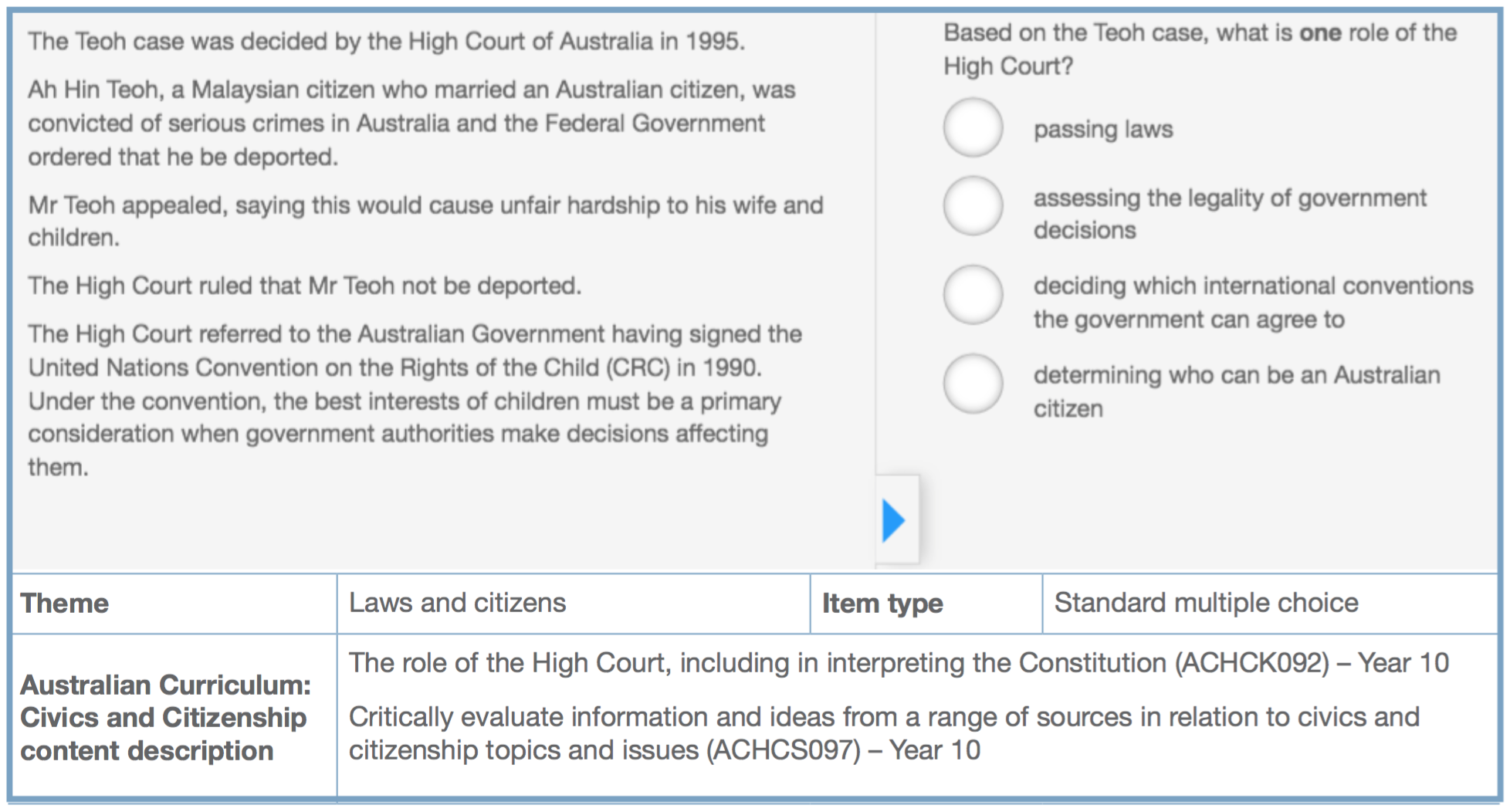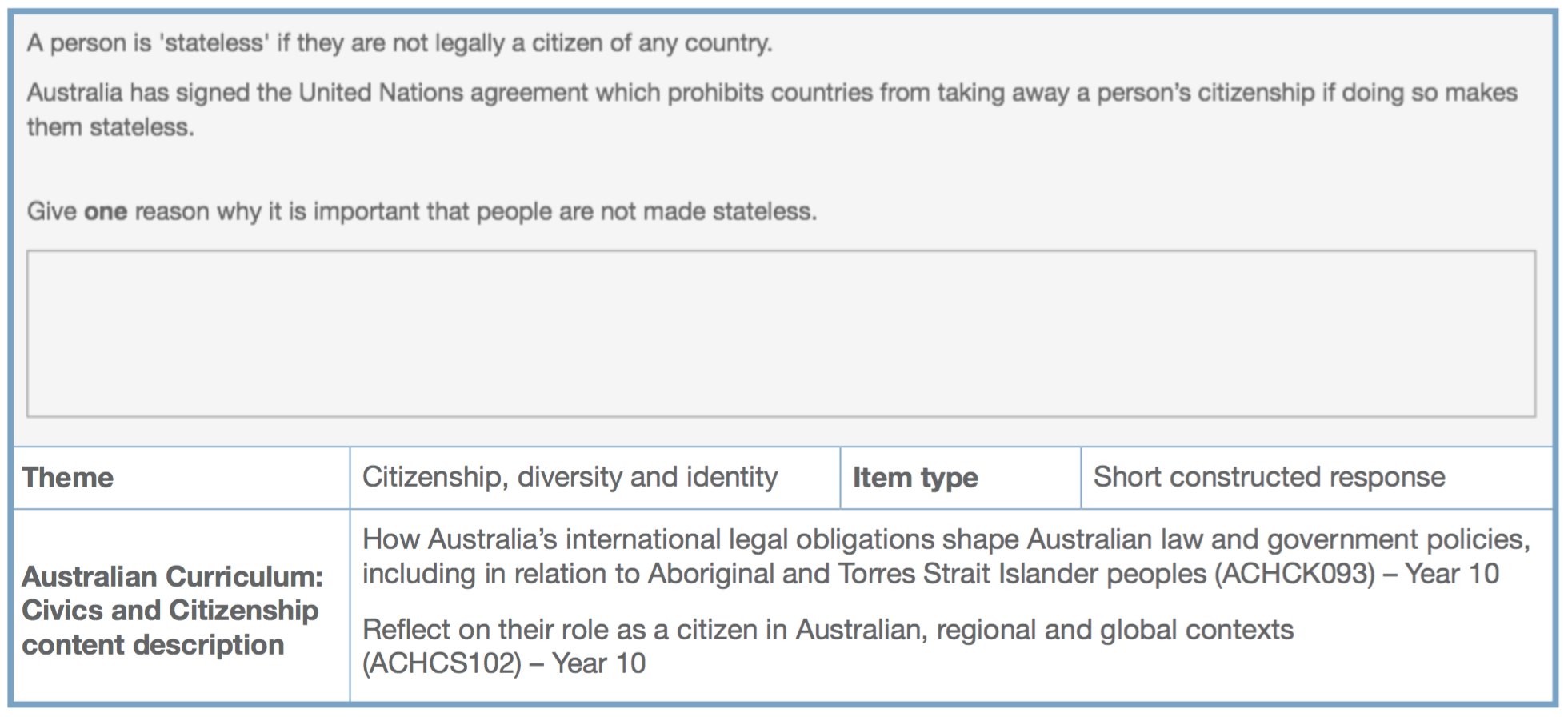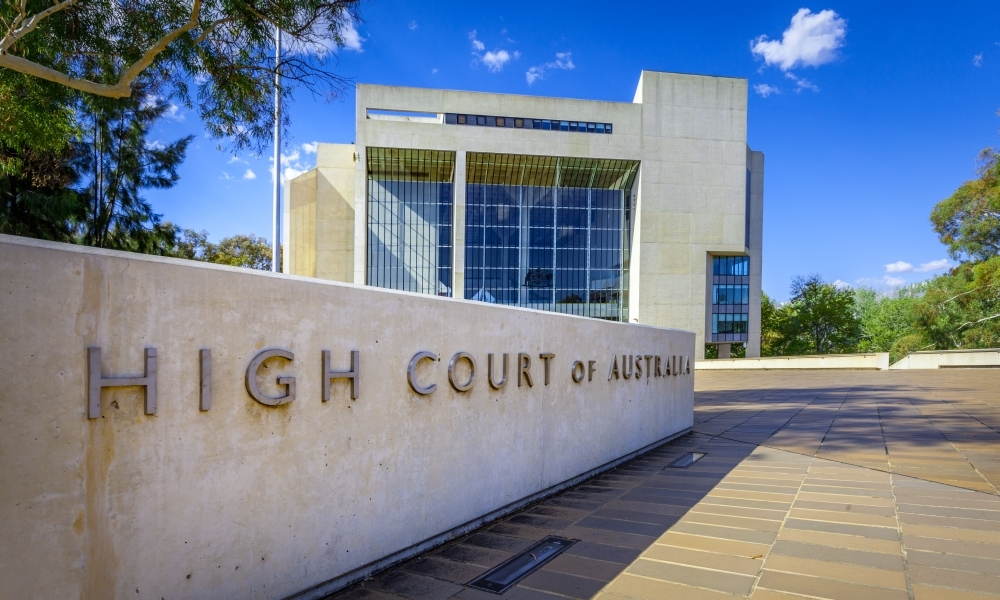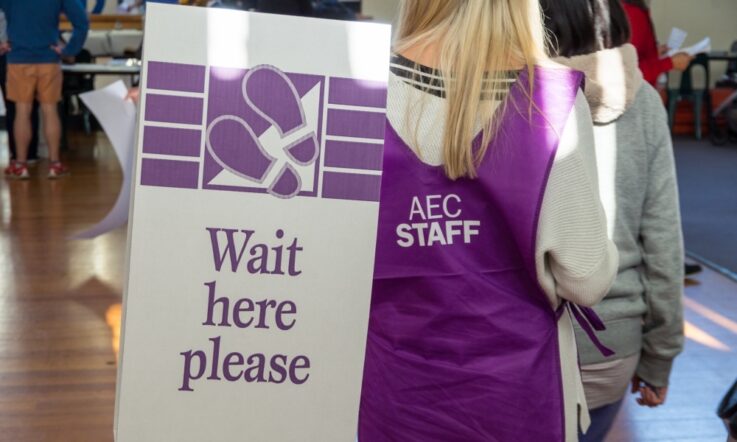In a three-part series, we are delving into the Civics and Citizenship learning area of the Australian Curriculum, and some aspects of the Australian Curriculum: History to explore students’ misconceptions, and to share some lesson activities to help your planning for 2022. The first instalment focused on ‘Government and democracy’. Part two looks at the themes of ‘Laws and citizens’ and ‘Citizenship, diversity and identity’.
The latest National Assessment Program – Civics and Citizenship (NAP-CC) report shows that Australian students’ performance has plateaued when it comes to understanding the importance of democracy and appreciating national values – 38 per cent of Year 10 students reached the proficient standard and 53 per cent of Year 6 students achieved the benchmark.
Administered in 2019, the assessment was delivered online to a representative, random sample of 5611 students in Year 6 and 4510 students in Year 10. In NAP-CC, students are marked against six proficiency levels ranging from ‘level 5’ to ‘below level 1’. The first article gives more details of what these proficiency levels mean, in terms of what students should be able to do and understand.
For students in Year 10 the proficient standard is the boundary between levels 2 and 3, and for Year 6 it is the boundary between levels 1 and 2. In other words, younger students performing at level 2 and above and older students at level 3 and above have met or exceeded the benchmark.
Each NAP–CC 2019 assessment item is mapped to one of the content descriptions in the Australian Curriculum. In today’s article, we have chosen example test items from two areas: ‘Laws and citizens’ and ‘Citizenship, diversity and identity’.
Example one: Laws and citizens
The theme ‘Laws and citizens’ examines different facets of Australia’s legal system, including the creation of laws and the rights and legal obligations of Australian citizens. In the Australian Curriculum, this theme is shaped by four inquiry questions.
- What principles of justice help to protect the individual’s rights to justice in Australia’s system of law?
- How are laws made and applied in Australia?
- How does Australia’s court system work in support of a democratic and just society?
- How are government policies shaped by Australia’s international legal obligations?
Looking at national test data can be a useful tool for identifying student misconceptions and gaps in understanding. The following test item from NAP-CC explores the role of Australia’s High Court. It was administered to students in Year 10.

Exemplar item from the assessment. Image credit: Australian Curriculum, Assessment and Reporting Authority (ACARA)[*] .
In this item, students were asked to consider information about a case and identify one role played by the High Court based on its decision in that case. To be awarded one mark for this question, students needed to identify that the role of the High Court is to assess the legality of government actions. According to the NAP-CC scale, one mark demonstrated performance at level 3.
Student performance: Data show just less than half (49 per cent) of Year 10 students achieved level 3 on the scale for this item, with 22 per cent indicating that they thought the High Court is responsible for determining government involvement in international conventions.
Possible lesson activities
The ACARA report outlines several activities that teachers could use to support students in the development and extension of their knowledge of the role of the High Court.
- Examine the jurisdiction of the High Court
- Explore an example of a High Court judgement interpreting and applying Australian law, such as the Franklin River dam, Mabo, and the Hindmarsh Island Bridge
- Provide students with extracts or summaries of cases and judgements made by the High Court, and analyse the arguments presented by the members of the court
- Consider the operation of the High Court and debate the advantages and disadvantages of majority verdicts by its justices (Fraillon et al., 2020).
The Australian Constitution Centre has produced a High Court Case Study resource on Mabo (PDF, 1.8MB).
This Parliamentary Education Office resource for Years 9-12 students gives tips and templates for how to stage a role-play about a hypothetical High Court case.
For younger students, the High Court of Australia has produced an activity booklet for primary teachers to use in the classroom.
Example two: Citizenship, diversity and identity
In the Australian Curriculum, ‘Citizenship, diversity and identity’ explores the shared values of the Australian community, including Australia as a diverse, multicultural and multi-faith society and what shapes our identity. Like the example above, this theme is shaped by four inquiry questions:
- How is Australia a diverse society and what factors contribute to a cohesive society?
- What different perspectives are there about national identity?
- How do citizens participate in an interconnected world?
- What are the features of a resilient democracy?
The following NAP-CC test item explores the notion of ‘statelessness’ and its connection to the rights of citizens both nationally and internationally.

Exemplar item from the assessment. Image credit: Australian Curriculum, Assessment and Reporting Authority (ACARA)[*] .
In this test item, students were asked to write a short constructed response outlining one reason why it is important for people not to be made stateless. National data show only 39 per cent of Year 10 students received two marks for this item, and 39 per cent received one mark. Just over one-in-five students (22 per cent) did not receive a mark at all, given they either failed to provide a response or their answer was irrelevant, incorrect or too vague.
To achieve two marks and demonstrate level 3 on the NAP-CC scale, students had to provide a response that explored the legal and emotional connections and obligations that exist between citizens and national and international governments, or explored notions of identity and belonging.
Possible lesson activities
The report outlines several activities that teachers could use to support students in the development and extension of their understanding of the national and international obligations associated with citizenship.
- Discuss the implications of living in an interconnected world and what this means for active and informed citizenship
- Explore Australia’s obligations in international treaties, and how these obligations only take effect when implemented by statute
- Research international treaties, such as the International Convention on the Elimination of All Forms of Racial Discrimination, the Convention on the Rights of the Child, and the Declaration on the Rights of Indigenous Peoples, and list Australia’s obligations under these treaties and how they have shaped government policies and laws
- Debate the qualities, rights and responsibilities of a citizen in contemporary Australia (Fraillon et al., 2020).
Stay tuned: In the final installment we’ll discuss two more themes explored in the national report, ‘Australian history’ and ‘Civics and citizenship and history skills’, and will provide examples and teaching activities to help inform your lesson planning.
References
Fraillon, J., Friedman, T., Ockwell, L., O'Malley, K., Nixon, J., & McAndrew, M. (2020). National Assessment Program Civics and Citizenship National Report 2019. Australian Curriculum Assessment and Reporting Authority. https://research.acer.edu.au/civics/33
[*]©Australian Curriculum, Assessment and Reporting Authority (ACARA) 2009 to present, unless otherwise indicated. This material was downloaded from the ACARA website (www.acara.edu.au) (Website) (accessed October 2021) and was not modified. The material is licensed under CC BY 4.0 (https://creativecommons.org/licenses/by/4.0/). ACARA does not endorse any product that uses ACARA material or make any representations as to the quality of such products. Any product that uses material published on this website should not be taken to be affiliated with ACARA or have the sponsorship or approval of ACARA. It is up to each person to make their own assessment of the product.
Consider the list of lesson activities outlined in the article. Which of these could you use with students in your classroom? Would you need any support from colleagues or external experts? What material resources would you need? How would you go about extending students in the area of ‘Laws and citizens’ or ‘Citizenship, diversity and identity’?



